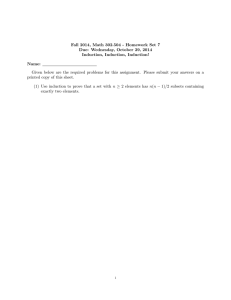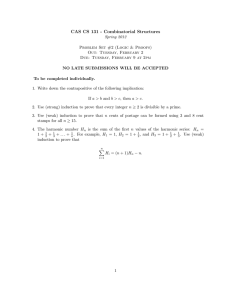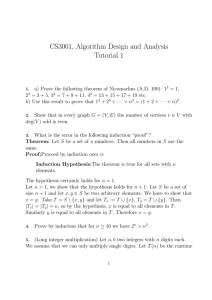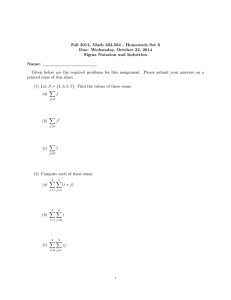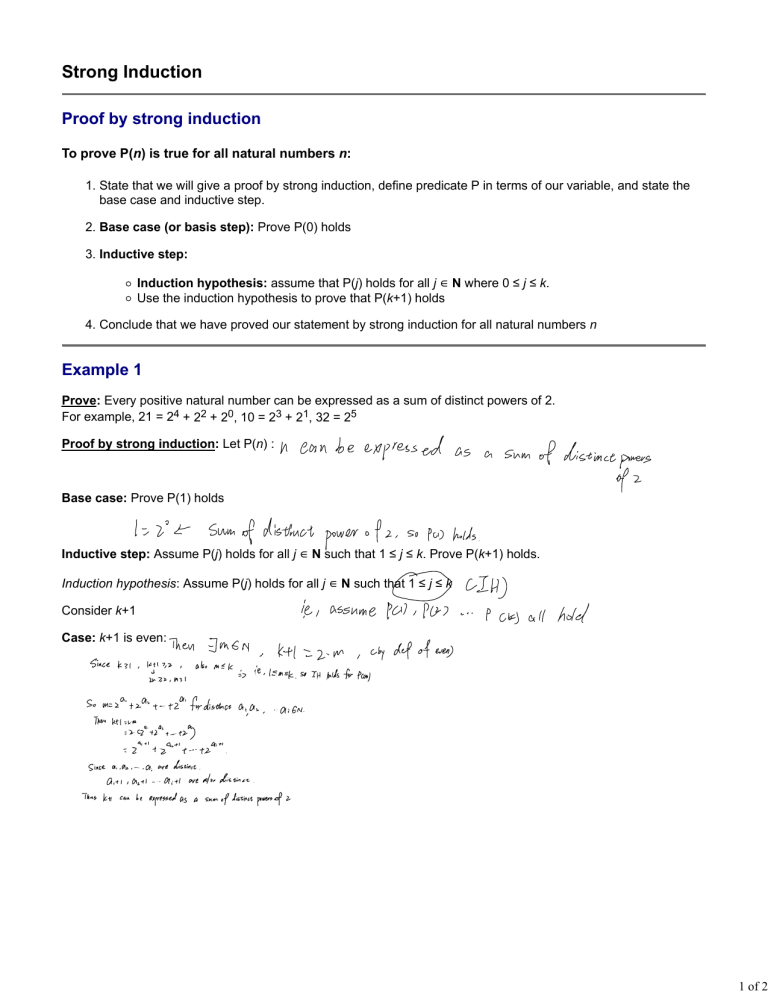
Strong Induction Proof by strong induction To prove P(n) is true for all natural numbers n: 1. State that we will give a proof by strong induction, define predicate P in terms of our variable, and state the base case and inductive step. 2. Base case (or basis step): Prove P(0) holds 3. Inductive step: Induction hypothesis: assume that P(j) holds for all j ∈ N where 0 ≤ j ≤ k. Use the induction hypothesis to prove that P(k+1) holds 4. Conclude that we have proved our statement by strong induction for all natural numbers n Example 1 Prove: Every positive natural number can be expressed as a sum of distinct powers of 2. For example, 21 = 24 + 22 + 20, 10 = 23 + 21, 32 = 25 Proof by strong induction: Let P(n) : Base case: Prove P(1) holds Inductive step: Assume P(j) holds for all j ∈ N such that 1 ≤ j ≤ k. Prove P(k+1) holds. Induction hypothesis: Assume P(j) holds for all j ∈ N such that 1 ≤ j ≤ k Consider k+1 Case: k+1 is even: 1 of 2 Case: k+1 is odd: Example 2 Consider a game in which two players take turns removing any (positive) number of stones they want from one of two piles of stones. The player who removes the last stone wins the game. Prove that if the two piles contain the same number of stones initially, the second player can always guarantee a win. Proof by strong induction: Let P(n) : Base case: Prove P(1) holds Inductive step: Assume P(j) holds for all j ∈ N such that 1 ≤ j ≤ k. Prove P(k+1) holds. Induction hypothesis: Assume P(j) holds for all j ∈ N such that 1 ≤ j ≤ k Suppose we start with k + 1 stones in each pile. Case: Player 1 takes all k + 1 stones from one pile Case: Player 1 takes m stones from one pile where 1 ≤ m ≤ k, leaving k + 1 - m stones in that pile 2 of 2
